Talk with our local travel specialist who can help organize your trip.
Nepal Trekking FAQs - 40 Questions Answered
Trekking in Nepal is a thrilling experience, particularly in the snow-covered Himalayas. Before deciding on a trek to the Nepal Himalayas, one must consider several factors, including the trekking season, region, difficulty level, cost, and so on.
We frequently receive many inquiries regarding trekking in Nepal by amateur and pro trekkers from all around the world. Hence, we have collected the 40 most important frequently asked questions about trekking in Nepal. Make sure to read these questions before deciding on a trek to the Himalayas of Nepal.
Recommended Read:
Most Frequently Asked Questions About Travel In Nepal
Top 10 Frequently Asked Questions About Everest Base Camp Trek
Following are some of the most frequently asked questions about trekking in the Nepal Himalayas:
Table of Content
- 1. Where Are The Best Places To Go Trekking In Nepal?
- 2. How Expensive Is Trekking In Nepal?
- 3. Do I Need A Trekking Permit In Nepal?
- 4. How Difficult Is Trekking In Nepal?
- 5. What Is The Best Time To Visit Nepal For Trekking?
- 6. What Happens If There Is An Emergency?
- 7. How Much Cash Should You Bring On The Trek?
- 8. How Do You Stay Healthy During A Trek In Nepal?
- 9. How Far Will You Walk Every Day?
- 10. Can You Trek Alone In Nepal?
- 11. Is Nepal Safe For Solo Female Travelers?
- 12. Why Should You Go Trekking In Nepal?
- 13. Will You Have To Carry Your Own Stuff?
- 14. Can You Store Extra Baggage Or A Suitcase At The Hotel? Is There Any Cost?
- 15. Is There Any Weight Limit For Domestic Flights?
- 16. What Is The Weight Limit For A Porter?
- 17. Can You Have A Private Room In Tea House Accommodation?
- 18. How Can You Get Drinking Water?
- 19. Does A Trekking Guide Carry First Aid? Do You Need To Bring Some Medicine?
- 20. Where Will I Stay During The Trek?
- 21. What Is Tea House Trekking?
- 22. Are There Toilets Available During The Tea House/Camping Trekking?
- 23. What Will I Eat During The Trek?
- 24. Can I Get A Shower Along The Trek?
- 25. What Is Camping Trekking?
- 26. What Kind Of Luggage Should I Bring?
- 27. Is Internet Access Available While Trekking?
- 28. Can I Use Credit Cards In The Places We Visit While Trekking?
- 29. How Long Should I Go Trekking In Nepal?
- 30. How Do I Prepare For Himalayan Treks In Nepal?
- 31. What Is Homestay Trekking?
- 32. How Is A Lodge Or Tea House Trek Operated In Nepal?
- 33. Do You Need A Guide To Trek In Nepal?
- 34. Do You Need A Porter To Trek In Nepal?
- 35. Is It Safe To Travel To Nepal?
- 36. How Is Safe Trekking In Nepal During Covid?
- 37. What Type Of Insurance Should I Get?
- 38. Will I Get Altitude Sickness?
- 39. Which Is The Longest Trekking Route In The Himalayas Of Nepal?
- 40. What To Wear While Trekking In Nepal?
- Conclusion
1. Where Are The Best Places To Go Trekking In Nepal?
There are a wide range of places that you can go for trekking in Nepal. If you are looking for a classic and popular trek then Everest and Annapurna region can be the best places. Some of the most liked trekking trails are Everest Base Camp trek, Annapurna Base Camp trek, and Annapurna Circuit Trek, among others. If you are looking for an isolated trekking route then heading to Kanchenjunga, Dolpo, Humla, Upper Mustang would be best.
You can discuss your requirements with the travel agency who will suggest the best treks for you.
2. How Expensive Is Trekking In Nepal?
The cost of trekking in Nepal can depend upon many factors, including the number of days, trekking region, and difficulty level. Many treks are affordable, and some that are expensive. In general, trekking in the Himalayas of Nepal can cost between US$100 to $200 per person per day. The cost includes trekking permits, accommodation, food, transport, guides and porters, and other expenses.
The trekking permits fees will be specific to the trekking region and route and accommodation in lodges/tea houses or camps/tents is cheap. On the other hand, the cost of food and drinks is high in the Himalayas due to transportation issues and sparse vegetation. For transportation, you can opt for a budget public bus transportation option or a more expensive private jeep or car option.
Other optional expenses include guide and porters for which their accommodation and food expenses, daily wage, and optional tips must be born. You would also need some money kept aside for personal use, emergency, and shopping.
3. Do I Need A Trekking Permit In Nepal?
Yes, the majority of the treks in Nepal would require you to have a trekking permit. A common trekking permit that you require are the National Park/Conservation Area Project Permits which is applicable if your trekking trail passes through any national park or conservation area.
Restricted Area Permits are required in certain remote and rural areas near the borders that the Nepal Government highly regulates. Some areas like Upper Mustang, Dolpo, Humla, Kanchenjunga require this permit. An independent trekker cannot collect it. Hence, one should hire a registered Nepali travel agency to acquire the permit.
Check out more on the specific permit and details in this How To Get TIMS Card And Trekking Permits In Nepal blog.
4. How Difficult Is Trekking In Nepal?
Trekking in Nepal has been categorized into three major difficulty levels - Easy to Moderate, Moderate to Difficult, and Difficult to Challenging. There are certain considerations to factor in while deciding the difficulty level of the trek. Trekking in the Himalayas of Nepal often means walking in rugged trails with distant shattered lodges, no transportation facilities in rural areas, chances of high altitude sickness, and unprecedented weather changes in the Himalayas. They add to the challenge of trekking in Nepal.
For amateur trekkers, the easy to moderate treks like Poonhill, Ghorepani, Annapurna Base Camp treks are the best. For trekkers with good physical fitness and past trekking experience, moderate to difficult treks like Gokyo Lake and Manaslu are best. The pro trekkers with the correct physique, high altitude trekking experience, and skills can opt for difficult to challenging level treks like Everest Three Pass, Mustang Teri La Pass, and Nar Phu Valley.
Hence, the difficulty level of trekking in Nepal is varied, and one can select the desired trek based on the number of days, trekking regions, time of the year, and difficulty level.
Recommended Read:
How difficult is Everest Base camp Trek?
How difficult is Manaslu Trek?
How Difficult is the Annapurna Base Camp Trek?
Following are some of the most frequently asked questions about trekking in the Nepal Himalayas:
5. What Is The Best Time To Visit Nepal For Trekking?
The best season for trekking in Nepal is the Autumn and Spring seasons. The autumn season lasts from September to November, while the Spring season lasts from March to May. These are the best months for trekking in Nepal. The weather is clear during these seasons with blue skies, fresh vegetation, blooming wildflowers, and ideal temperature. The views of the Himalayan range around Nepal are clear.
The winter season from December to February has temperatures dropping to -18 degrees celsius so it is not suitable for higher altitude trek. If you want to plan a trip in winter, keep reading our blogs about winter treks in Nepal. The Monsoon season from June to August is the
6. What Happens If There Is An Emergency?
If there is an emergency while trekking in the himalayas of Nepal, your first point of contact can be our guide who has got the relevant safety training. They will arrange for any rescue mission by coordinating with the travel agency.
In case you have not hired a guide, then it is best to apply any available first aid that you have or head to the nearest healthpost set up near the trail. In the worst case you can get in touch with an agency in Kathmandu that offers Helicopter rescue for medical evacuation.
What essential documents do I need to bring with me on tour?
You need to carry your visa, passport, insurance policy documents, and relevant permits while coming for a trek to Nepal. Visa on arrival and some of the permits can be acquired after you land in Nepal as well. To acquire permits you would require to carry 3-4 passport sized photos.
7. How Much Cash Should You Bring On The Trek?
The cash that you need to carry entirely depends upon the length of the trek and if you are opting to plan the trek with a travel agency or not. All the basic facilities like food, accommodation, porters and guides are provided by the travel agency if you go on an all-inclusive package with them. In that case, you need to bring cash only for your personal expenses, tipping and shopping.
If you go on an independent trek then you need to carry enough cash for all the necessities and personal expenses.
The Kanchenjunga Trek of 24 days Everest Three Pass Trek of 20 days are also regarded as some of the longest treks in Nepal. Apart from these treks, Nepal tourism board has also released the Great Himalayan Trail spanning 1700km which takes roughly 157 days to complete. It is a combination of the best treks stretching from the Kanchenjunga region in the east to Api Nampa in the far west.
8. How Do You Stay Healthy During A Trek In Nepal?
To stay healthy during a trek in Nepal, you need to maintain the correct balance of your diet and water intake. Make sure that you don't consume junk or heavily spiced food. Try to eat local produce where possible.
Drinking enough water is another way to maintain your health as the treks can go as long as 8 to 9 hours each day which can cause dehydration. Avoid tap water or groundwater at any cost so make sure to take purification tablets or drink bottled water.
9. How Far Will You Walk Every Day?
The average walking distance varies according to the topography, length of the trek and altitude. For example you would cover about 12km/7.5 miles each day during the 7 days Annapurna Base Camp trek. However, for the longer treks in remote areas, the distance covered could be more. On an average you may walk for 5 to 7 hours on a trek in the himalayas.
10. Can You Trek Alone In Nepal?
Yes, you can trek alone in Nepal except for some restricted areas where the government has made it compulsory to take a guide.
However, we don't recommend trekking alone in off seasons when there is a high chance of getting lost in the heavy snow. It is also not wise to trek alone if you are a first time trekker in Nepal.
11. Is Nepal Safe For Solo Female Travelers?
Nepal is a safe country for solo female travelers as the government takes all precautions to maintain the safety of the travelers. However in the trekking regions you need to properly plan the trek beforehand, keep your belongings to yourself, and wear non-revealing clothes as a precaution. You can also hire a good travel agency to manage the trek for you. Keep reading our blogs about Is Nepal Safe For Female Travellers - Travel Tips
12. Why Should You Go Trekking In Nepal?
You should go trekking in Nepal to witness the diverse and rich culture, religion, traditions, and the majestic snow capped himalayas. The verdant hills and the rugged trekking trails make it perfect for getting connected with nature while flexing your muscles. Nepal has eight of the world’s tallest 8000m peaks and the most popular trails like Everest Base Camp trek and Annapurna Base Camp trek to name a few.
13. Will You Have To Carry Your Own Stuff?
Yes, you will have to carry your own stuff while trekking alone. If you have hired a porter then they will carry some of the heavy bags while you will be left to carry the rest. It is advised that you pack light so that you don't have to bear the heavy burden during the trek.
14. Can You Store Extra Baggage Or A Suitcase At The Hotel? Is There Any Cost?
Most of the hotels will not charge any extra cost for storing extra baggage or suitcase at the hotel. It is a good idea to do this if you will return back to the same route. Make sure that you don’t leave any jewelry, electronics or items of value in the baggage.
15. Is There Any Weight Limit For Domestic Flights?
For most domestic flights in Nepal, the free baggage weight limit is anywhere from 15 kgs to 25 kgs. Beyond the free limit, generally 7 kgs can be added for which there is extra baggage charge per kg. In addition to that, there is a free cabin/handbag limit of around 5 kgs.
Featured Trips
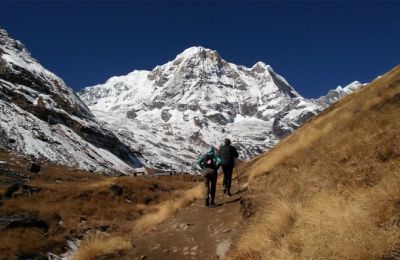
Annapurna Base Camp Trek - 11 days
Annapurna Base Camp Trek - 11 days takes you close to the world's 10th highest mountain, Annapurna I, Gurung culture, rhododendron forest, and terraced fields.
Inquire Now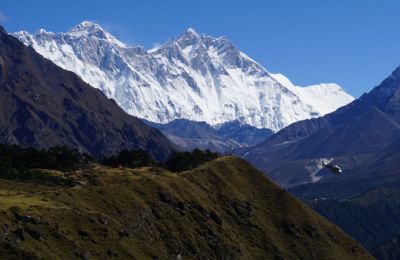
Everest Base Camp Trek - 14 days
Looking for an exciting Himalayan experience? Join us on our 14 day Everest Base Camp Trek - get ready to be stunned by breathtaking views and discover magical Nepalese cultures!
Inquire Now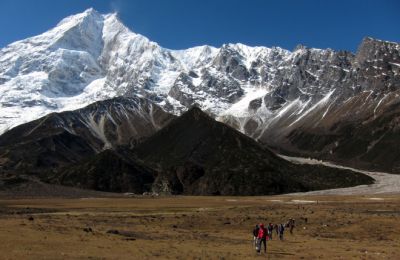
Manaslu Trek via Barpak and Laprak - 17 days
Manaslu Trek - 17 days is an off-beat trekking adventure with a fascinating cultural experience. Walk to the base of Manaslu, the eighth highest peak in the world.
Inquire NowWhere to travel next?
Get help from our travel specialists for holiday ideas that matches your interests.
16. What Is The Weight Limit For A Porter?
The travel agency’s all-inclusive package includes one porter for two trekkers. If you are not going in a package then you can hire a separate porter. Each porter can carry maximum 20-25 kgs of total weight which can be a heavy load shifted from your back.
17. Can You Have A Private Room In Tea House Accommodation?
Private rooms are available in most of the well-established tea houses in the lower altitude regions. However, in the high altitude regions, the availability of tea houses is scarce and the number of trekkers is high so trekkers have to spend the night in a dormitory on a sharing basis.
18. How Can You Get Drinking Water?
You can buy bottled drinking water in the stores or tea houses along the trail. However, the price of bottled mineral water rises as you head up the higher altitude. Alternatively, you can also buy boiled water from the tea houses at a relatively lower price.
To save money, you can also carry a purification tablet or reusable bottle with built-in filtration so that the water from local taps can be filled and filtered for drinking.
19. Does A Trekking Guide Carry First Aid? Do You Need To Bring Some Medicine?
Yes, the professional trekking guides assigned by the travel agencies carry first aid so that you won’t have to. Also they are trained in the first aid response in case of emergency. For an independent trek, you need to make sure of this before you hire a guide. Additionally, you can carry only the medicines prescribed by your doctor.
20. Where Will I Stay During The Trek?
You will be staying either in the tea houses/lodges or in camps/tents. While most of the trekking trails have tea houses at some walking distance, some remote areas don't have the facilities so you will be setting up tents for accommodation. Popular and well established routes also have luxury lodges. Some well-trodden routes with ethnic communities living nearby have homestay accommodation as well.
21. What Is Tea House Trekking?
Tea house trekking is where you stay in the small mountain lodges that fall on the trekking trail. These lodges have all the basic amenities and are run by the locals residing in the area. They have basic facilities like a kitchen, eating space, public toilets and small bedrooms with minimal furniture.
Some even have hot water showers, wifi, and cell phone charging facilities. Of course, money is charged for the amenities used. While the price of rooms is generally lower, the food and other amenities cost more like the rise in altitude due to lack of transport facilities.
22. Are There Toilets Available During The Tea House/Camping Trekking?
Communal/public toilets are available in the tea houses along the trails mostly in high altitude areas. As these are squat pan toilets, you will have to get used to it. Some of the tea houses in the lower altitude may have an attached toilet near your room which can be a luxury.
However, for the camping treks in rural areas without a settlement nearby, you need to set up a makeshift toilet by digging a hole in the ground.
23. What Will I Eat During The Trek?
In most of the tea houses/lodges you can choose what to eat from a menu that includes both local meals as well as western cuisine. The most common meal is ‘Dal Bhat’ which is a set of rice, lentil soup, vegetable curry and pickles. As it is made from locally produced vegetation so it is cheap and also healthy. However you can also choose to eat pancakes, porridge, eggs, potatoes, pizza and dumplings found commonly in many tea houses in the Everest and Annapurna regions.
24. Can I Get A Shower Along The Trek?
Most of the decent tea houses along the popular trekking trails have a hot water shower facility for which you have to pay an extra USD 1 or 2 per person per shower. If you don’t have the budget for it, you can shower in a gap of 2-3 days while using wet wipes, sponges, and wet towels as an alternative.
25. What Is Camping Trekking?
Camping trek is common and popular for remote trekking trails with no lodges. It requires you to set up camps/tents on your own for an overnight stay. Although it can be tedious, it keeps you closer to nature and wildlife while also making you self-sufficient.
26. What Kind Of Luggage Should I Bring?
For your most valuable and frequently used items, you need to carry a small 30L daypack/backpack with yourself. Additionally bring a large duffle bag for your rarely used items like heavy clothing and equipment which can be carried by the porter.
27. Is Internet Access Available While Trekking?
Internet connection is available in most of the trekking regions in Nepal. As you go to the higher altitude the connectivity will be erratic. Wifi is accessible in some of the tea houses in popular trekking routes. The owners will charge about USD 2 for an hour of usage but the connectivity can be uncertain. The popular trekking trail in the Everest region has Everest Link ISP so the internet works throughout the trail in different tea houses and lodges.
Alternatively, you can also get prepaid SIM card internet service by buying data packages from two popular companies NCELL and NTC. You can expect 3G service in Annapurna and Everest region while using this. In the higher altitude it is tough to get cellular network.
28. Can I Use Credit Cards In The Places We Visit While Trekking?
Credit cards can be used in ATMs and POS facilities available in the urban city areas. However, once you start walking in the trekking trails with distant settlements, the tea houses only accept cash payment. Hence it is best to carry Nepali currency with you rather than relying on credit cards in the himalayan trekking trails.
29. How Long Should I Go Trekking In Nepal?
You can go trekking in Nepal for anywhere from as short as 5 days to as long as 30 days. The length of the trek will depend upon your budget, physical fitness, time to spare, trekking region and route. While the short trekking in Nepal is mainly centered around the foothills and lower altitude, the long treks branch out to the Himalayas and high altitude passes.
On average, 10-14 days trek is suitable for a trekking enthusiast or an amateur to explore the beauty of the himalayan terrain in Nepal.
30. How Do I Prepare For Himalayan Treks In Nepal?
Trekking in the Himalayas of Nepal can be an adventurous and challenging experience. However, with the correct preparation, it can be smooth and successful. To prepare and plan for himalayan treks in Nepal, you need to do some research about Nepal and the different trekking regions compared to your time, budget, and physical fitness.
Prepare yourself physically by regularly working out, running, jogging, swimming, or cycling to build your stamina. Avoid eating junk food, smoking, and drinking alcohol profusely. Besides maintaining your diet, you can also take short hikes or treks around nearby hills and mountains.
Get in touch with a local Nepali travel agency to know more and explore the options of planning a trek with them.
Featured Trips
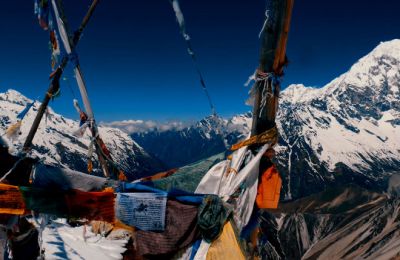
Langtang Valley Trek - 11 days
Langtang Valley Trek is best suited for those looking for a short trekking adventure with amazing Himalayan views and unique mountain culture. Explore Langtang National Park and experience Tamang culture.
Inquire Now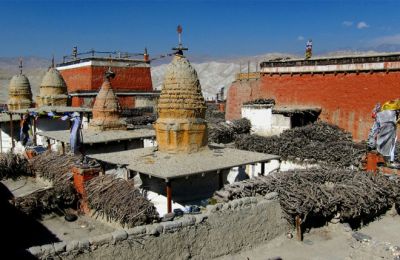
Upper Mustang Trek - 15 days
Upper Mustang Trek is a relatively new trek in Nepal as the region was opened to foreigners since 1992. Upper Mustang is culturally and geographically more similar to Tibet.
Inquire Now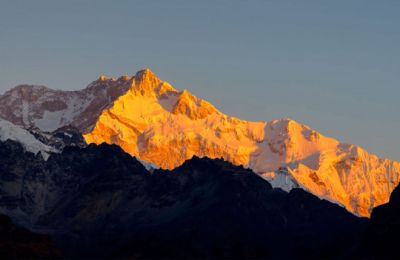
Kanchenjunga Trek - 24 days
Kanchenjunga Trek is a remarkable long remote trek into Nepal's most isolated areas of far-eastern Nepal. During 24 days Kangchenjunga circuit trek, you'll explore the area around Kanchenjunga, the third highest mountain in the world.
Inquire NowWhere to travel next?
Get help from our travel specialists for holiday ideas that matches your interests.
31. What Is Homestay Trekking?
Homestay trekking is where you stay at the traditional homes of the locals in the trekking trail. This is common in well-trodden routes with ethnic communities living nearby. It is a great way to explore the lifestyle and culture of the Nepali communities.
32. How Is A Lodge Or Tea House Trek Operated In Nepal?
Lodge or Tea House Trek are accommodations alongside the trekking trails in Nepal. The Tea houses got their name because these were previously places where trekkers could relax and sip a cup of tea during their trek. Now, they have been transformed to full accommodation.
The locals operate these tea houses across different trekking regions like Langtang, Everest Annapurna, Manaslu, and more. While some locals/tea house owners reside in the tea houses, some generally run the tea houses seasonally and head back to the home in lower altitude regions in the off-seasons.
In addition to lodging and food, the tea houses are also a great way to meet other trekkers and a way of social gathering.
33. Do You Need A Guide To Trek In Nepal?
Taking a trekking guide is not mandatory in all trekking regions of Nepal. Except for the restricted regions like Upper Mustang and Dolpo, you would not be required by the authority to take a guide for your treks.
We highly suggest that you hire one if you plan to trek in the Himalayas of Nepal. A professional guide is one of the most valued local knowledge and safety sources. Guides can help you navigate the route, give insights into the culture, traditions, and history, and make interacting with the locals easier. Moreover, they can assist and advise during unfortunate altitude sickness or health issues.
34. Do You Need A Porter To Trek In Nepal?
It is not compulsory to hire a porter for all your treks in Nepal. Generally, the all-inclusive package offered by the travel agencies includes a porter. If you don't wish to take a porter then you can ask the agency to exclude the porter from the package. Whereas, if you are trekking independently, then you can decide on hiring or not hiring a porter as well.
We suggest that you take a porter along with you as they are well acquainted with the trekking trails. Moreover, it is ethical to hire a porter as they are provided with seasonal employment, which helps in uplifting their economic status. Also, the more you interact with them, you get an even better picture of the culture and traditions of the local mountain communities.
least preferred due to heavy rainfall and subsequent landslides and best for Trans Himalayan rain shadow areas.
35. Is It Safe To Travel To Nepal?
It is safe to travel in Nepal as Nepal welcomes guests as gods and treats tourists with the utmost respect. The local communities living along the trekking trails are humble and welcoming. The serious crime rate in Nepal is relatively lower.
Political turmoil can occur. However, the government of Nepal ensures that all tourists are protected and safely reach home after their tours. Some of the contingencies that can occur while trekking in the Himalayas of Nepal are snow blizzards, avalanches, and high altitude sickness. Hence it would help if you took precautions, followed the designated trail, and took the assistance of your guide at all times. Overall, it is safe to travel to Nepal.
36. How Is Safe Trekking In Nepal During Covid?
There are certain laws and policy changes made on Visa on Arrival and Visa from Embassy made by Nepali Government regarding Covid vaccination, restrictions, and quarantine. It is safe to travel to Nepal if you follow the imposed guidelines and take all safety precautions.
Before planning on a trek to Nepal, make sure that you check the government-imposed laws in your country and Nepal. Nepal is still open to tourism and mountain trekking in the times of Covid, and the government, along with the tourism industry, is taking all the appropriate steps to maintain safety and minimize the effects.
Additionally, it is best to contact a local travel agency in Nepal to manage your trek as they would give accurate details on the situation in Nepal.
37. What Type Of Insurance Should I Get?
Trekking in Nepal's high and rugged terrains can be risky as it involves reaching altitudes of over 4,000m/ 13,123ft. At this altitude, there are risks of altitude sickness, common ailments, and digestive issues. Travel insurance while visiting foreign countries is always advised as a safety net.
Hence, while taking insurance, make sure that the policy covers the maximum altitude of the trek and the activities being undertaken. Also, ensure that it covers helicopter and ambulance rescue costs, evacuation, medical expenses, and trip cancellation in case of contingency.
38. Will I Get Altitude Sickness?
Altitude Sickness, known as Acute Mountain Sickness (AMS), is relatively common in high-altitude treks above 3,000m/ 9,842ft trails. It is usually caused when you ascend to higher elevations quickly. The brain cannot get enough oxygen as the oxygen level in the air is lower as altitude increases which makes it difficult for the body to adjust to the changing elevation. It causes mild to severe symptoms like dizziness, headache, sleeplessness, and breathlessness to hallucination, and even coma.
If you reside in a higher altitude region or have had the experience of high altitude treks in the past, then the chances are that you might not easily get altitude sickness. Also, if you follow the itinerary correctly, walk slowly in higher altitudes, take the appropriate acclimatization day, then the chances are lower.
39. Which Is The Longest Trekking Route In The Himalayas Of Nepal?
The longest tour is often considered the Upper Dolpo Trek in the remote trans-Himalayan region of Mid-west Nepal, which takes about 27 days to complete. On average, each day, one would have to trek from a minimum of 3 hours to a maximum of 8 hours.
Another lengthy trek is the 26 days long Mustang Teri La Pass and Nar Phu Valley Trek in the remote Manang and Mustang region. On average, one would have to walk 5 to 6 hours each day.
The Kanchenjunga Trek of 24 days Everest Three Pass Trek of 20 days are also regarded as some of the longest treks in Nepal.
40. What To Wear While Trekking In Nepal?
While trekking in Nepal it is essential to wear clothing that suits the rugged terrains and cold temperatures.
For the upper body wear long-sleeve shirts and carry some t-shirts for the trek. Carry lightweight thermals, fleece Wind stopper, down jacket, and down vest as the temperatures can be freezing. Waterproof shell jackets can also be carried. Wear non-cotton breathable briefs, lightweight thermals, and fleece or wool trousers. It is best to carry hiking shorts and hiking trousers best for foothill walks.
For the head make sure to wear a headscarf and beanie or a balaclava. Wear UV protection sunglasses and sunhat to protect against scorching sunny days. Wear lightweight poly liner gloves and a pair of polar fleece mittens in the hands. To keep the feet warm, wear lightweight inner socks and hiking socks, hiking boots with ankle support.
Also, check out the other packing list, including clothing, gear, equipment that you should consider while trekking in Nepal.
Conclusion
Trekking in Nepal Himalayas is an adventurous and memorable journey considering the lush nature, rich culture, and mountains. It can also be challenging if you are not fully prepared. However, following the above suggestions and insights can help you during the trek.
If you are planning for any treks in Annapurna, Langtang, Everest, Kanchenjunga, or other trekking regions in Nepal, then feel free to get in touch with our experts to know more. We will help organize and prepare you for the best trekking experience of your lifetime.
- Written by: Naba Raj Amgai
Updated: Feb, 9, 2022

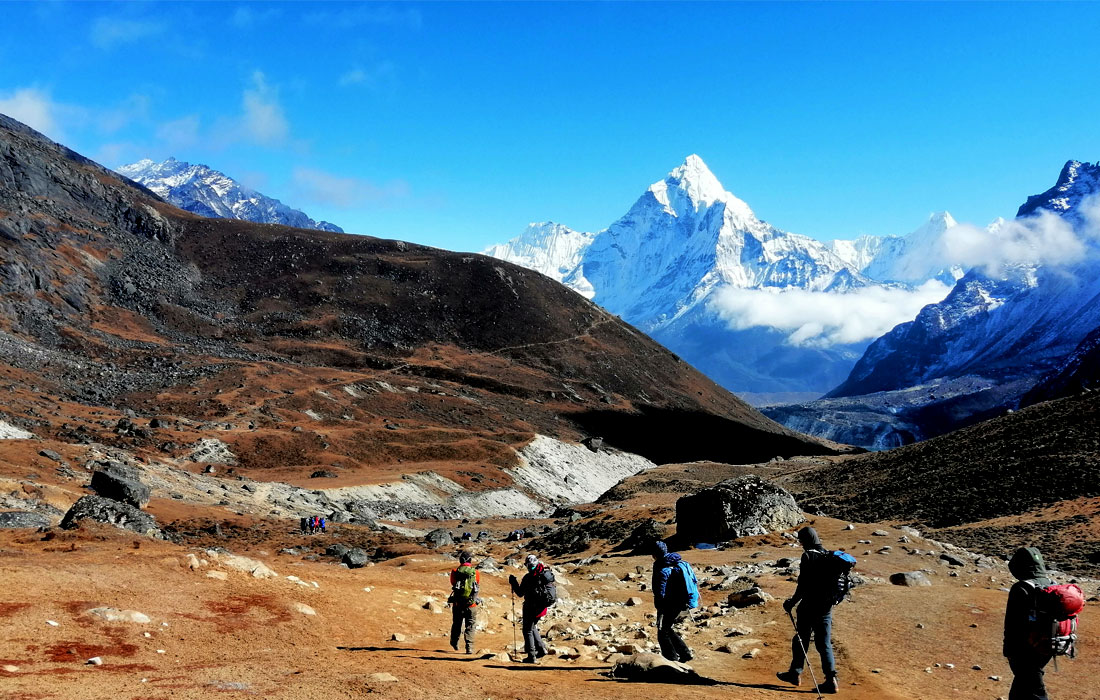

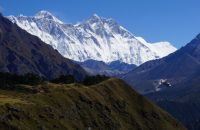
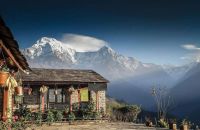
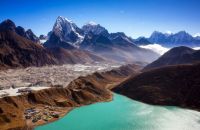
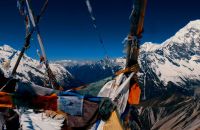
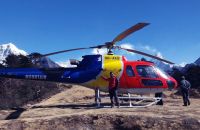
















Recent Comments